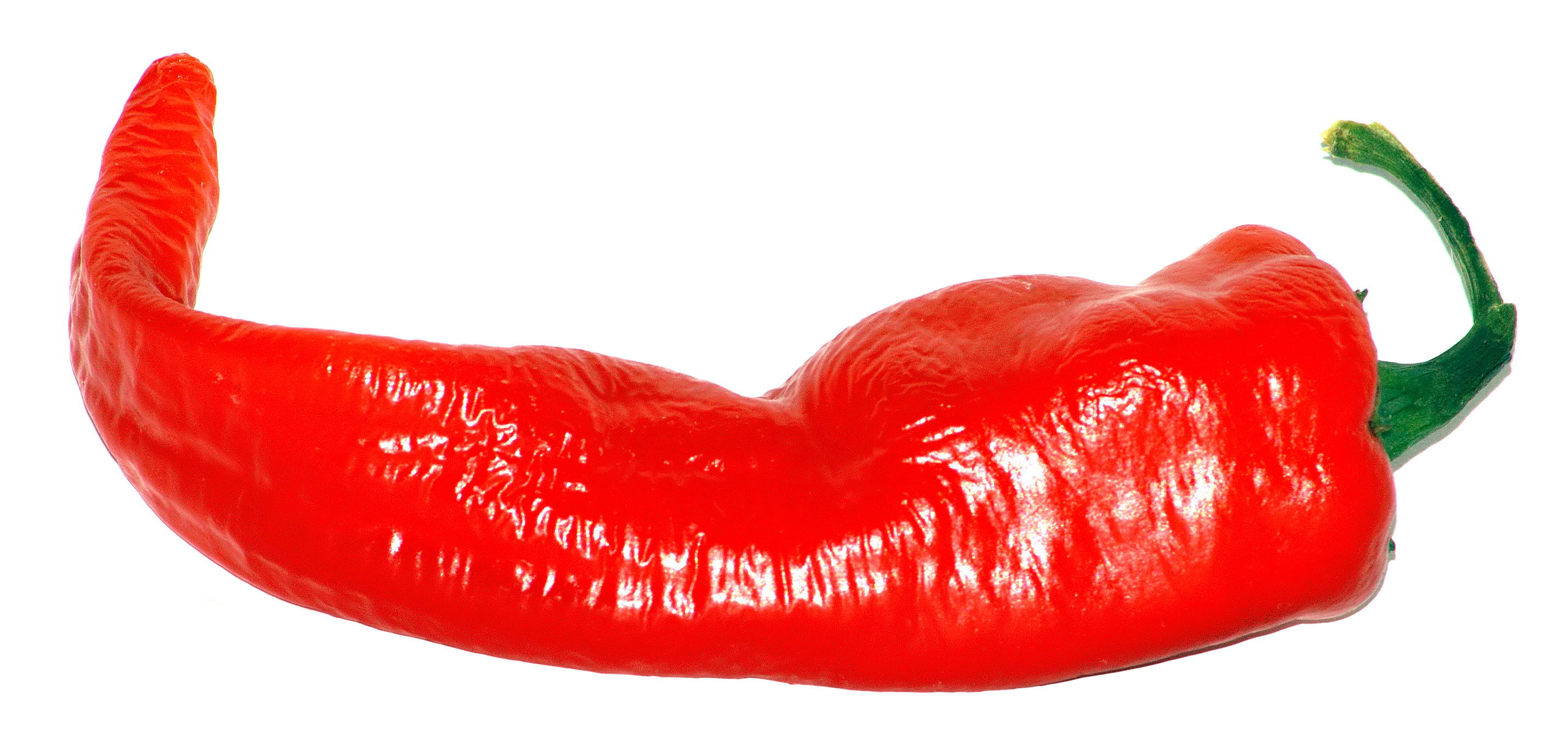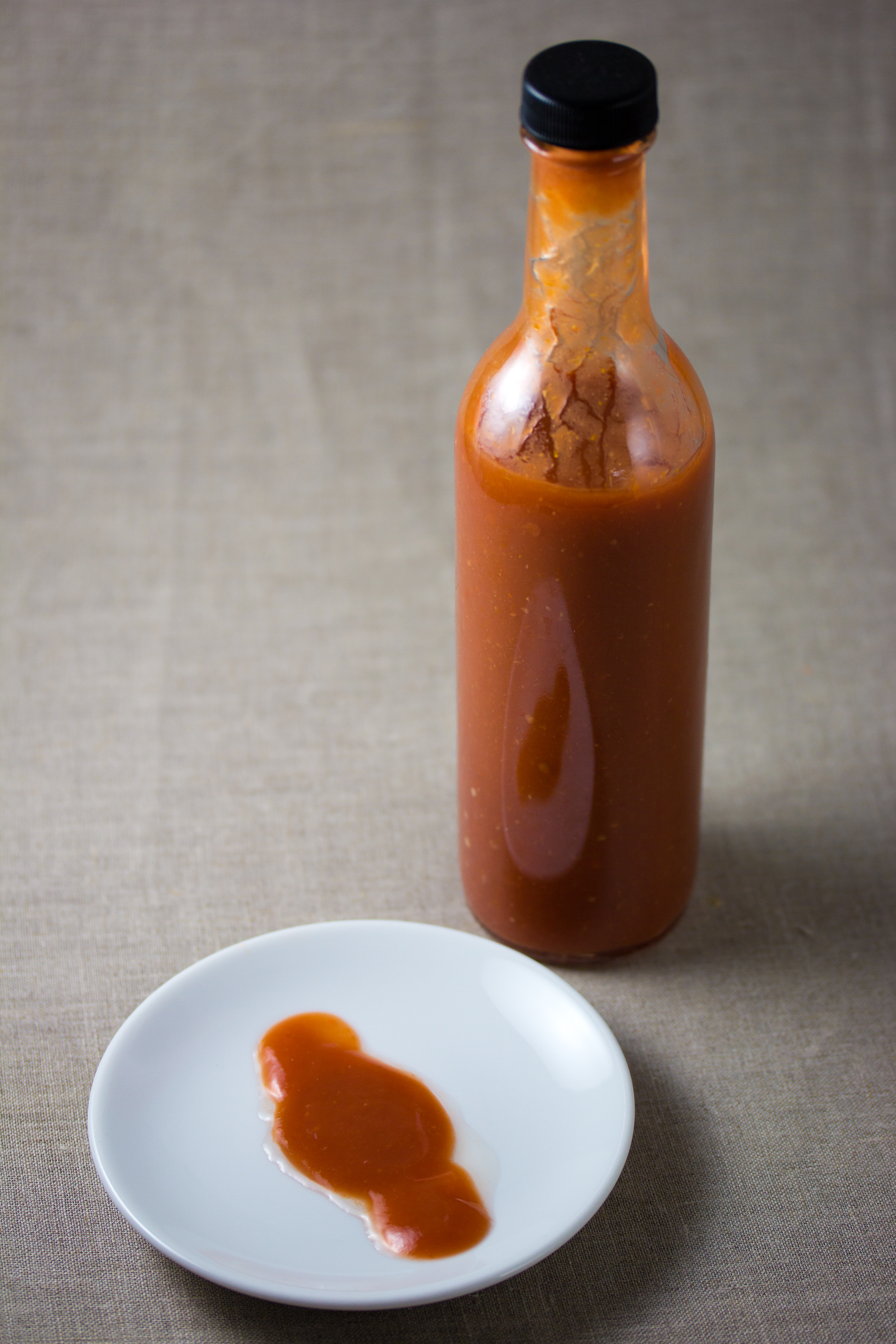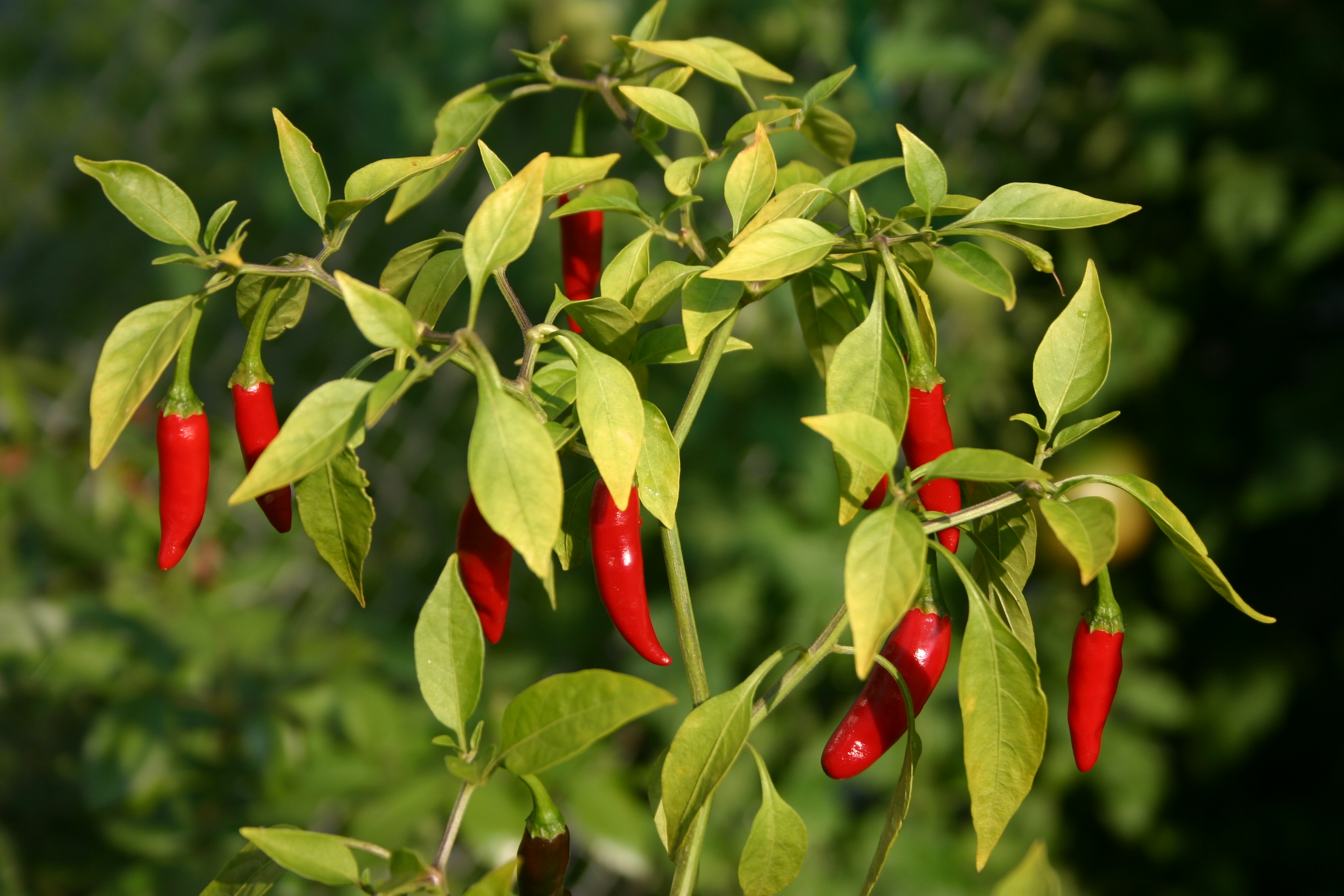|
Cayenne Pepper
The cayenne pepper is a type of '' Capsicum annuum''. It is usually a moderately hot chili pepper used to flavor dishes. Cayenne peppers are a group of tapering, 10 to 25 cm long, generally skinny, mostly red-colored peppers, often with a curved tip and somewhat rippled skin, which hang from the bush as opposed to growing upright. Most varieties are generally rated at 30,000 to 50,000 Scoville units. The fruits are generally dried and ground to make the powdered spice of the same name, although cayenne powder may be a blend of different types of peppers, quite often not containing cayenne peppers, and may or may not contain the seeds. Cayenne is used in cooking spicy dishes either as a powder or in its whole form. It is also used as an herbal supplement. Etymology The word 'cayenne' is thought to be a corruption of the word ''kyynha'', meaning "capsicum" in the Old Tupi language once spoken in Brazil. It is probable that the town Cayenne in French Guiana is related ... [...More Info...] [...Related Items...] OR: [Wikipedia] [Google] [Baidu] |
Capsicum
''Capsicum'' () is a genus of flowering plants in the nightshade family Solanaceae, native to the Americas, cultivated worldwide for their chili pepper or bell pepper fruit. Etymology and names The generic name may come from Latin , meaning 'box', presumably alluding to the pods; or possibly from the Greek word , 'to gulp'. The name "pepper" comes from the similarity of piquance (spiciness or "heat") of the flavor to that of black pepper, '' Piper nigrum'', although there is no botanical relationship with it or with Sichuan pepper. The original term, ''chilli'' (now ''chile'' in Mexico) came from the Nahuatl word ''chīlli'', denoting a larger ''Capsicum'' variety cultivated at least since 3000 BC, as evidenced by remains found in pottery from Puebla and Oaxaca. Different varieties were cultivated in South America, where they are known as ''ajíes'' (singular ''ají''), from the Quechua term for ''Capsicum''. The fruit (technically berries in the strict botanic ... [...More Info...] [...Related Items...] OR: [Wikipedia] [Google] [Baidu] |
Nightshade
The Solanaceae , or nightshades, are a family (biology), family of flowering plants that ranges from Annual plant, annual and perennial herbs to vines, lianas, epiphytes, shrubs, and trees, and includes a number of agricultural crops, medicinal plants, spices, weeds, and ornamentals. Many members of the family contain potent alkaloids, and some are highly toxin, toxic, but many—including tomatoes, potatoes, eggplant, bell pepper, bell and chili peppers—are used as Food#Planta, food. The family belongs to the order Solanales, in the Asterids, asterid group and class Magnoliopsida (dicotyledons). The Solanaceae consists of about 98 genera and some 2,700 species, with a great diversity of habitats, Morphology (biology), morphology and ecology. The name Solanaceae derives from the genus ''Solanum''. The etymology of the Latin word is unclear. The name may come from a perceived resemblance of certain solanaceous flowers to the sun and its rays. At least one species of ''Solanum'' ... [...More Info...] [...Related Items...] OR: [Wikipedia] [Google] [Baidu] |
Hot Sauce
Hot sauce is a type of condiment, seasoning, or salsa made from chili peppers and other ingredients. Many commercial varieties of mass-produced hot sauce exist. History Humans have used chili peppers and other hot spices for thousands of years. Inhabitants of Mexico, Central America and South America had chili peppers more than 6,000 years ago. Within decades of contact with Spain and Portugal in the 16th century, the New World plant was carried across Europe and into Africa and Asia, and altered through selective breeding. One of the first commercially available bottled hot sauces in America appeared in 1807 in Massachusetts. Few of the early brands from the 1800s survived to this day, however. Tabasco sauce is the earliest recognizable brand in the United States hot sauce industry, appearing in 1868. As of 2010, it was the 13th best-selling seasoning in the United States preceded by Frank's RedHot Sauce in 12th place, which was the sauce first used to create buffalo wing ... [...More Info...] [...Related Items...] OR: [Wikipedia] [Google] [Baidu] |
Seafood
Seafood is any form of sea life regarded as food by humans, prominently including fish and shellfish. Shellfish include various species of molluscs (e.g. bivalve molluscs such as clams, oysters and mussels, and cephalopods such as octopus and squid), crustaceans (e.g. shrimp, crabs, and lobster), and echinoderms (e.g. sea cucumbers and sea urchins). Historically, marine mammals such as cetaceans (whales and dolphins) as well as seals have been eaten as food, though that happens to a lesser extent in modern times. Edible sea plants such as some seaweeds and microalgae are widely eaten as sea vegetables around the world, especially in Asia. Seafood is an important source of (animal) protein in many diets around the world, especially in coastal areas. Semi-vegetarians who consume seafood as the only source of meat are said to adhere to pescetarianism. The harvesting of wild seafood is usually known as fishing or hunting, while the cultivation and farming of seafood is kno ... [...More Info...] [...Related Items...] OR: [Wikipedia] [Google] [Baidu] |
Cayenne Pepper (cropped)
The cayenne pepper is a type of ''Capsicum annuum''. It is usually a moderately hot chili pepper used to flavor dishes. Cayenne peppers are a group of tapering, 10 to 25 cm long, generally skinny, mostly red-colored peppers, often with a curved tip and somewhat rippled skin, which hang from the bush as opposed to growing upright. Most varieties are generally rated at 30,000 to 50,000 Scoville units. The fruits are generally dried and ground to make the powdered spice of the same name, although cayenne powder may be a blend of different types of peppers, quite often not containing cayenne peppers, and may or may not contain the seeds. Cayenne is used in cooking spicy dishes either as a powder or in its whole form. It is also used as an herbal supplement. Etymology The word 'cayenne' is thought to be a corruption of the word ''kyynha'', meaning "capsicum" in the Old Tupi language once spoken in Brazil. It is probable that the town Cayenne in French Guiana is related t ... [...More Info...] [...Related Items...] OR: [Wikipedia] [Google] [Baidu] |
List Of Capsicum Cultivars
This is a list of ''Capsicum'' cultivars belonging to the five major species of cultivated peppers (genus ''Capsicum''): '' C. annuum'', '' C. chinense'', '' C. baccatum'', '' C. frutescens'', and '' C. pubescens''. Due to the large and changing number of cultivars, and the variation of cultivar namings in different regions, this list only gives a few examples of the estimated 50,000 pepper varieties that exist. ''Capsicum'' species There are perhaps fifty thousand ''Capsicum'' cultivars grown worldwide. The USDA-ARS GRIN seed collection contains 6,200 ''Capsicum'' accessions alone, including 4,000 '' Capsicum annuum'' accessions. The other ''Capsicum'' species in the USDA germplasm repository include: '' C. chinense, C. baccatum, C. frutescens, C. pubescens, C. cardenasii, C. chacoense, C. flexuosum, C. eximium, C. rhomboideum, C. galapagoense,'' and ''C. tovarii.'' There are five major species of cultivated ''Capsicum'', '' C. annuum, C. chinense, C. baccatum, C. ... [...More Info...] [...Related Items...] OR: [Wikipedia] [Google] [Baidu] |
Piri Piri
( , often hyphenated or as one word, and with variant spellings , ''piripiri'' or ) is a cultivar of ''Capsicum frutescens'' from the malagueta pepper. It was originally produced by Portuguese explorers in Portugal's former Southern African territories, particularly Mozambique and its border regions with South Africa, and then spread to other Portuguese domains. Etymology ''Pilipili'' in Swahili means "pepper". Other romanizations include in the Democratic Republic of the Congo and in Malawi, deriving from various pronunciations of the word in different parts of Bantu-speaking Africa. is also the spelling used as a loanword in some African Portuguese-language countries, especially in the Mozambican community. The spelling is common in English, for example in reference to African-style chili sauce, but in Portuguese it is nearly always spelled ''piri-piri''. The '' Oxford Dictionary of English'' records as a foreign word meaning "a very hot sauce made with red ", a ... [...More Info...] [...Related Items...] OR: [Wikipedia] [Google] [Baidu] |
Bird's Eye Chili
Bird's eye chili or Thai chili (Thai: ''prik ki nu'', พริกขี้หนู, literally "mouse dung chili" owing to its shape) is a chili pepper, a variety from the species ''Capsicum annuum'' native to Mexico. Cultivated across Southeast Asia, it is used extensively in many Asian cuisines. It may be mistaken for a similar-looking chili derived from the species ''Capsicum frutescens'', the cultivar "siling labuyo". ''Capsicum frutescens'' fruits are generally smaller and characteristically point upwards. Description The bird's eye chili plant is a perennial with small, tapering fruits, often two or three, at a node. The fruits are very pungent. The bird's eye chili is small, but is quite hot. It measures around 100,000 - 225,000 Scoville units, which is at the lower half of the range for the hotter habanero, but still much hotter than a common jalapeño. Origins All chilis found around the world today have their origins in Mexico, Central America, and South Ame ... [...More Info...] [...Related Items...] OR: [Wikipedia] [Google] [Baidu] |
Piper Guineense
''Piper guineense'' is a West African species of '' Piper''; the spice derived from its dried fruit is known as Ashanti pepper, Benin pepper, Edo pepper, false cubeb, Guinea cubeb, and called locally ''kale'', ''kukauabe'', ''masoro'', ''etiñkeni'', ''sasema'', ''soro wisa'', ''eyendo'', ''eshasha'''by the Urhobo people, ''oziza'' and ''uziza''. It is a close relative of cubeb pepper and a relative of black pepper and long pepper. Unlike cubeb, which is large and spherical in shape, Ashanti pepper grains are prolate spheroids, smaller and smoother than Cubeb pepper in appearance and generally bear a reddish tinge. The stalks of Ashanti pepper berries are also distinctly curved whilst those of cubeb pepper are completely straight. The terms West African pepper and Guinea pepper have also been used, but are ambiguous and may refer to grains of Selim or grains of paradise. The plants that provide Ashanti pepper are vines that can grow up to 20 m in length, climbing up ... [...More Info...] [...Related Items...] OR: [Wikipedia] [Google] [Baidu] |
Aframomum Melegueta
''Aframomum melegueta'' is a species in the ginger family, Zingiberaceae, and closely related to cardamom. Its seeds are used as a spice (ground or whole); it imparts a pungent, black-pepper-like flavor with hints of citrus. It is commonly known as grains of paradise, melegueta pepper, Guinea grains, ''ossame'', or ''fom wisa'', and is confused with alligator pepper. The term Guinea pepper has also been used, but is most often applied to ''Xylopia aethiopica'' ( grains of Selim). It is native to West Africa, which is sometimes named the Pepper Coast (or Grain Coast) because of this commodity. It is also an important cash crop in the Basketo district of southern Ethiopia. Characteristics ''Aframomum melegueta'' is an herbaceous perennial plant native to swampy habitats along the West African coast. Its trumpet-shaped, purple flowers develop into pods long, containing numerous small, reddish-brown seeds. The pungent, peppery taste of the seeds is caused by aromatic k ... [...More Info...] [...Related Items...] OR: [Wikipedia] [Google] [Baidu] |
Complete Herbal
Nicholas Culpeper (18 October 1616 – 10 January 1654) was an English botanist, herbalist, physician and astrologer.Patrick Curry: "Culpeper, Nicholas (1616–1654)", ''Oxford Dictionary of National Biography'' (Oxford, UK: OUP, 2004) His book ''The English Physician'' (1652, later ''Complete Herbal'', 1653 ff.) is a source of pharmaceutical and herbal lore of the time, and ''Astrological Judgement of Diseases from the Decumbiture of the Sick'' (1655) one of the most detailed works on medical astrology in Early Modern Europe. Culpeper catalogued hundreds of outdoor medicinal herbs. He scolded contemporaries for some of the methods they used in herbal medicine: "This not being pleasing, and less profitable to me, I consulted with my two brothers, and , and took a voyage to visit my mother , by whose advice, together with the help of , I at last obtained my desire; and, being warned by , a stranger in our days, to publish it to the world, I have done it." Culpeper came from a ... [...More Info...] [...Related Items...] OR: [Wikipedia] [Google] [Baidu] |
Bird's Eye Chili
Bird's eye chili or Thai chili (Thai: ''prik ki nu'', พริกขี้หนู, literally "mouse dung chili" owing to its shape) is a chili pepper, a variety from the species ''Capsicum annuum'' native to Mexico. Cultivated across Southeast Asia, it is used extensively in many Asian cuisines. It may be mistaken for a similar-looking chili derived from the species ''Capsicum frutescens'', the cultivar "siling labuyo". ''Capsicum frutescens'' fruits are generally smaller and characteristically point upwards. Description The bird's eye chili plant is a perennial with small, tapering fruits, often two or three, at a node. The fruits are very pungent. The bird's eye chili is small, but is quite hot. It measures around 100,000 - 225,000 Scoville units, which is at the lower half of the range for the hotter habanero, but still much hotter than a common jalapeño. Origins All chilis found around the world today have their origins in Mexico, Central America, and South Ame ... [...More Info...] [...Related Items...] OR: [Wikipedia] [Google] [Baidu] |










